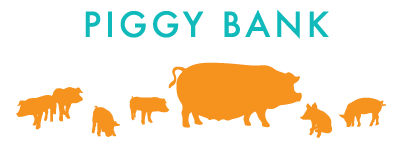CHALLENGES TO FAMILY FARMER
Family farms all across the country are struggling to keep up with the demand to provide an alternative to commercialized agricultural products. They are fighting to offer the American people safer food versus the option of mass-produced, genetically engineered, pesticide, hormone and antibiotic ridden industrialized food products widely available in super markets.
Sadly, many family farmers committed to raising safe, humanely produced food face challenges. Starting a farm is costly, and most new farmers have limited access to assistance, genetics and knowledge. Small family farmers can be wiped out by disease or disaster, with no safety net. Successful harvests present small family farmers with challenges as well, many of whom have no expertise or knowledge in marketing or how to connect with dependable pathways into the market.
Finally, losing small American family farm raises concerns about food scarcity. Most farmers today are older and there aren’t enough families starting new farms today. Aging farmers, whose average age has risen from 52 to 57 during the last 20 years, are often retiring without a younger family member willing to take over. Many articles have been written about “the disappearing family farm” and refer to the slow disappearance of multi-generation farms.
In 1988, the US Department of Agriculture (USDA) recognized the problems facing small family farmers and acknowledged the need to create systems to guarantee sustainable agriculture.
+ BREEDS IN DANGER
As a result of factory farming, some livestock breeds of pigs, poultry, cows, horses and sheep have become threatened by extinction.
Of the ten breeds of heritage pigs, only one is not in danger.
Three breeds are now “critically endangered” (Choctaw, Mulefoot, Ossabaw Island) with populations estimated at only a few hundred animals of each breed.
Bred for longevity in a free-range environment, four of the breeds are “threatened”
Two are “on watch lists” as categorized by livestock conservancy organizations
If these breeds disappear, so do the safe, humane farming practices that go hand in hand with their survival. This is not just a concern for conservationists, but to everyday consumers who want to be able to buy non-genetically modified pork products.
+ GMO HEALTH RISKS
Previously the pigs of choice, heritage breed pigs have struggled to survive in the US since the consolidation of smaller farms and the rise of large-scale factory farms that followed World War II. Most of the heritage breeds did not “fit” in confinement swine operations and were thus not selected by the large commercial producers. Rather, commercial producers began to create genetically modified (GMO) pigs that were adapted to confinement settings and produced higher yields. This began the transition from open pastured, humanely raised livestock and a concern for animal welfare.
By the 1990’s the pork industry was almost entirely controlled by large, industrialized producers inhumanely raising pigs in confinement houses. These factories polluted the air from the cesspools and waste sprayers associated with confined pigs and supplied the market with bland, genetically altered pork products. Consumer demand for lean meat produced by factory farms coupled with the replacement of products like lard for cooking with hydrogenated vegetable oil furthered the endangerment of heritage breed pigs.
Fortunately, in the 2000’s, concerns about our environment and increasing evidence of the harmful effects of pesticides and hormones used in large-scale food production came under scrutiny. More recently, food safety and human health concerns have also focused on excessive use of antibiotics on animals in confined management systems, citing a link to increased antibiotic resistance. Today, most Americans understand the significant risks associated with large-scale food production practices. Piggy Bank believes that our society is ready for a transition back to a more sustainable way of farming.

